
Recently, we interviewed David Borlaug, the president of The Capital Gallery, about the differences and synergies between physical space and cyberspace in art. The gallery is located downtown in Bismarck, North Dakota.
In 1980, in Washburn, ND, Borlaug co-founded Farm & Ranch Guide, which became the most popular farm newspaper nationwide. In the early 1990s, he formed the Lewis & Clark Fort Mandan Foundation and, since 2000, served as president. Borlaug also served as chairman of the board of Prairie Public Broadcasting. Currently, Borlaug serves as the vice president of both the Central Dakota Humane Society and the Bismarck-Mandan Symphony Orchestra.
In 2016, he moved to Bismarck to establish The Capital Gallery, which operates as both a museum and a retail art store.
Here
Dakota Digital Review: In today’s world, with everything going virtual—especially during the pandemic—why is a brick-and-mortar art gallery still relevant?
David Borlaug: An art gallery is important because that’s how you need to experience art. When you are looking at a piece, you need to step back to gain perspective. If the painting is expressive or abstract, you need to look at it from several distances to determine what you are really looking at. In other pieces, you will need to look very closely. Yes, you can zoom in on a computer monitor, but you can’t zoom out properly or observe from different points of view. Also, an art gallery gives you the total experience of being surrounded by art.
The in-person engagement with art is also about other people around you. That’s why we have opening receptions. Someone might be pondering a Fritz Scholder piece, for example, and someone else walks up and asks “What do you think he is trying to say?
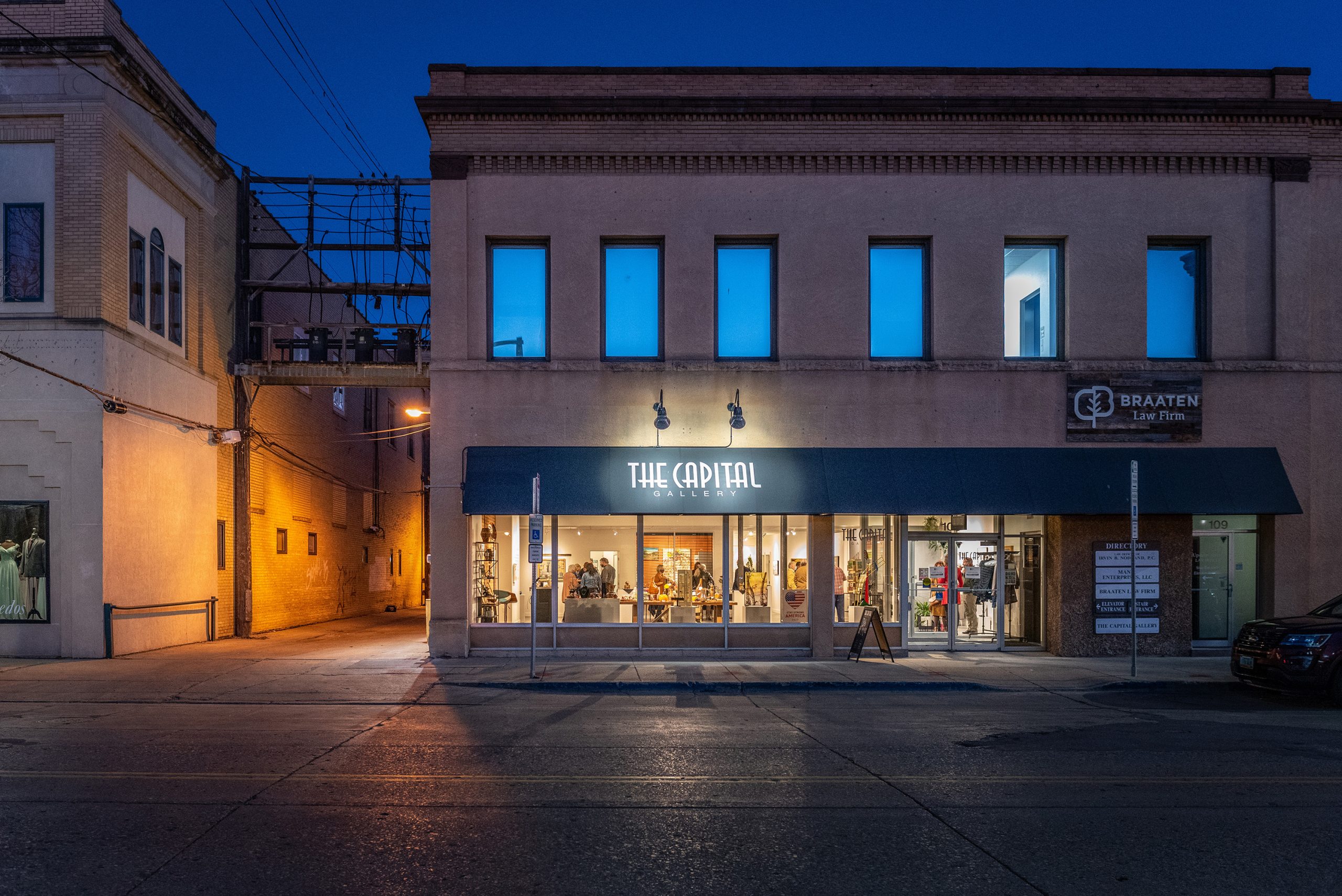
Dakota Digital Review: How often do you exhibit artists?
Borlaug:About two to three months for each show. It’s too much work to put an artist’s work up for 30 days, take it down and start over. More importantly, it’s not fair to the artist.
Every exhibit transforms the gallery space. The far wall, which is about 45 feet long, looks incredibly different each time. Three years ago, Jessica Wachter, who is from Bismarck, had her first major showing here and then showed again last year. Jessica had many large paintings, and it was a smash success, with sales nationwide.
Of course, not many people have room for such large works, nor do they have the means. That’s where an artist like Bob Matz comes in. We are showing his work now. Many of the paintings are small, and the price points are affordable.
One of our advisers said that our mission is to teach people in Bismarck the joy and value of original art. Imagine the delight a work by Jessica or Bob or Walter Piehl brings into someone’s house. Unlike a print or poster, when you take original art home, it’s transformative.
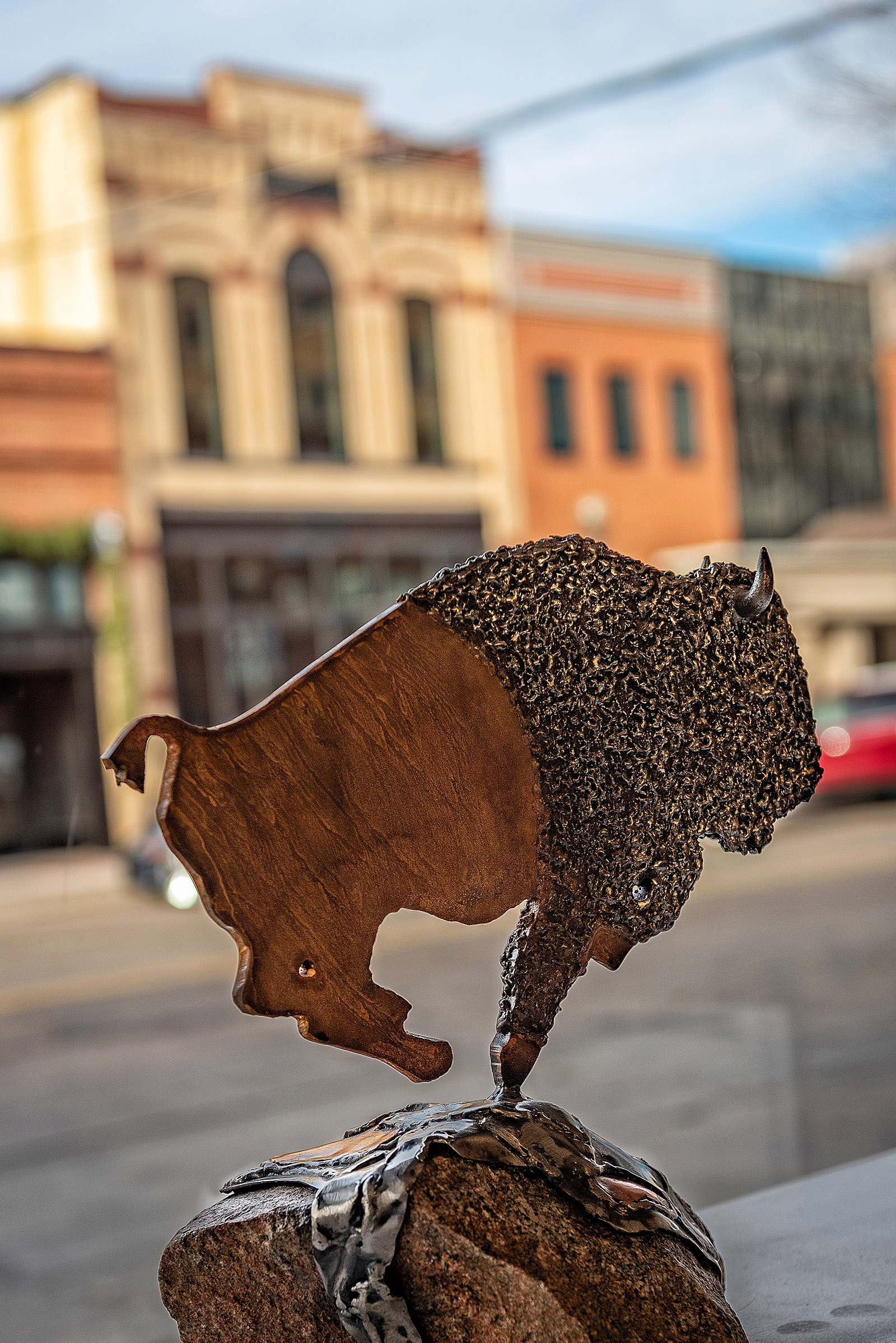
Dakota Digital Review: Artists often feel the need to live in art centers like New York or Chicago or Minneapolis. But art itself is very local, right?
Borlaug: We have shown very high-quality artists from outside the region, and they don’t sell as well as local artists. For our clients, there needs to be an affinity. Most of them go to Scottsdale for the winter, where there is no shortage of opportunities to buy art, and still they buy here. More than once we’ve had people buy art because it replicates what they see out their window in North Dakota. At least there needs to be a local theme. Colorado artist Michael Haynes sold well because he was the artist of record for the Lewis and Clark Expedition, as well as being a national award-winning artist.
There
Dakota Digital Review: You said earlier that a 30-day showing isn’t fair to the artist. Why?
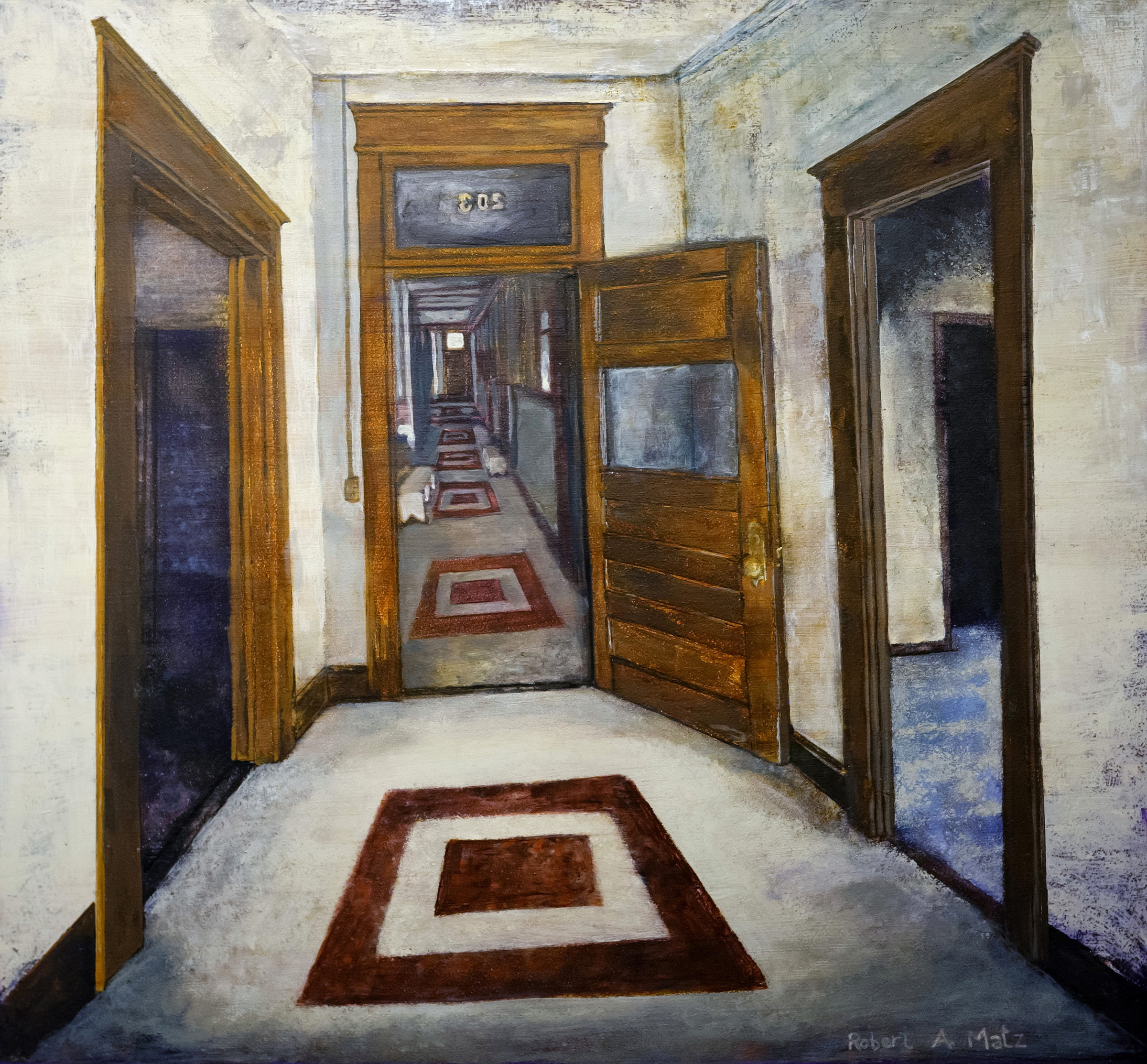
Borlaug: Often, a buyer makes several trips to the gallery to view a piece before purchasing. Maybe they want to check the measurements or match colors. We also let them live with the art to see how they feel about the piece. Next week, Marci Narum and I are taking several paintings to Fargo to a client’s house to help the couple make up their minds. They need to live with it in three-dimensional space first. It is a large commitment. Art changes the gallery space dramatically, so we allow people to take it home, hang it for a while and experience how it transmutes rooms at home.
Dakota Digital Review: Do you have a presence elsewhere in the state?
Borlaug: Yes, since May we have been the fine art provider for an interior design showroom in downtown Fargo, Curated by Trevor Hill Design. Two summers ago, we opened a satellite gallery in Medora, which attracts thousands of tourists to western North Dakota. The gallery is in the Harold Schafer Heritage Center.
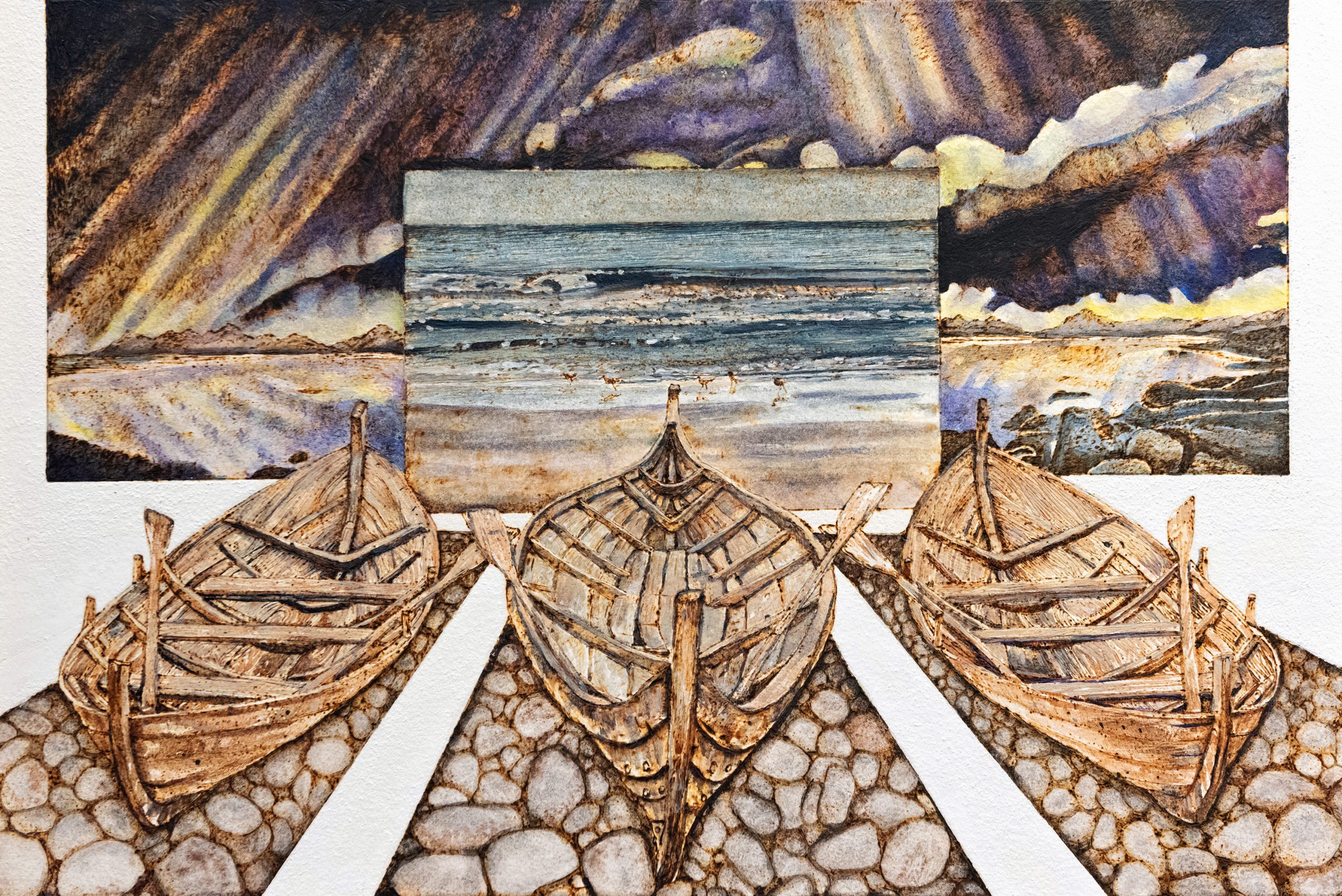
When we were planning The Capital Gallery, many people advised me to follow the business interests that were pushing development into North Bismarck. We were told to open in a mall where there’s free parking. In any case: Don’t go downtown; no one goes THERE!
But city centers are important for the development of culture. The convergence of government offices, businesses and apartments in multi-story building creates the population density needed to support high-end restaurants, theater, art galleries and bakeries—like the exquisite one that opened across the street. These institutions in turn function as anchors for further development in the city’s core. So THERE becomes the place to go.
Don’t go downtown; no one goes there! But city centers are important for the development of culture … so THERE becomes the place to go.
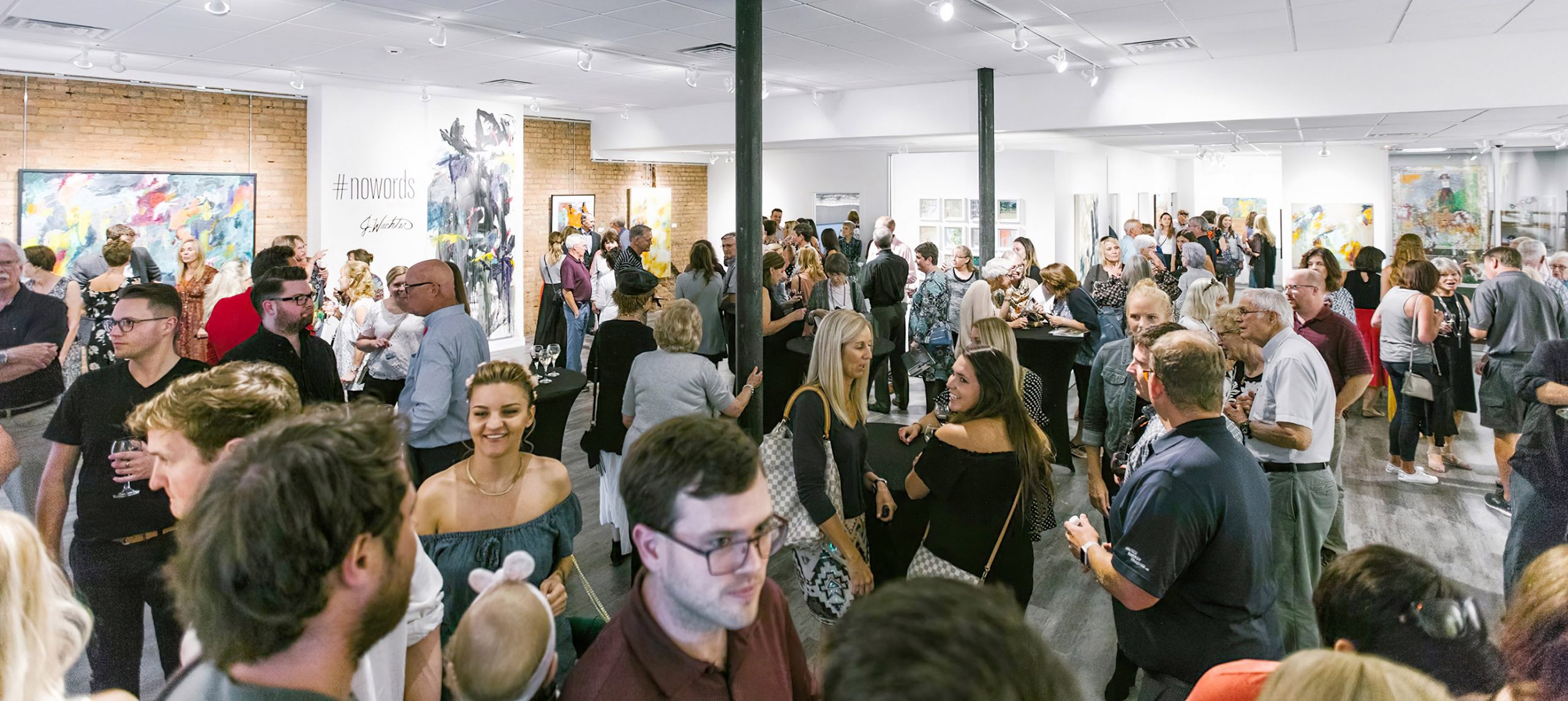
That’s why we keep the lights on 24 hours a day. Everyone dining at Pirogue Grille, The Toasted Frog, India Clay Oven in the evening can walk by, peer into the gallery and come back to visit. It would be great to have three or four other galleries nearby.
Also, from Thanksgiving through Christmas, we rented a store space at the Kirkwood Mall in Bismarck. Art is available to buy, and there are three demonstrating artists: Linda Donlin, Nicole Gagner and Katrina Case.
The digital dimensions of an art gallery obviously work, but virtual reality can’t ever replace the real experience.
Everywhere
Dakota Digital Review: Does The Capital Gallery have a website?
Borlaug: Yes, we are online at thecapitalgallery.com. Portfolios of the artists who have exhibited here can be viewed on the website. Typically, an artist’s portfolio is uploaded soon after the opening reception and then is updated regularly to show the works that are still available for sale.
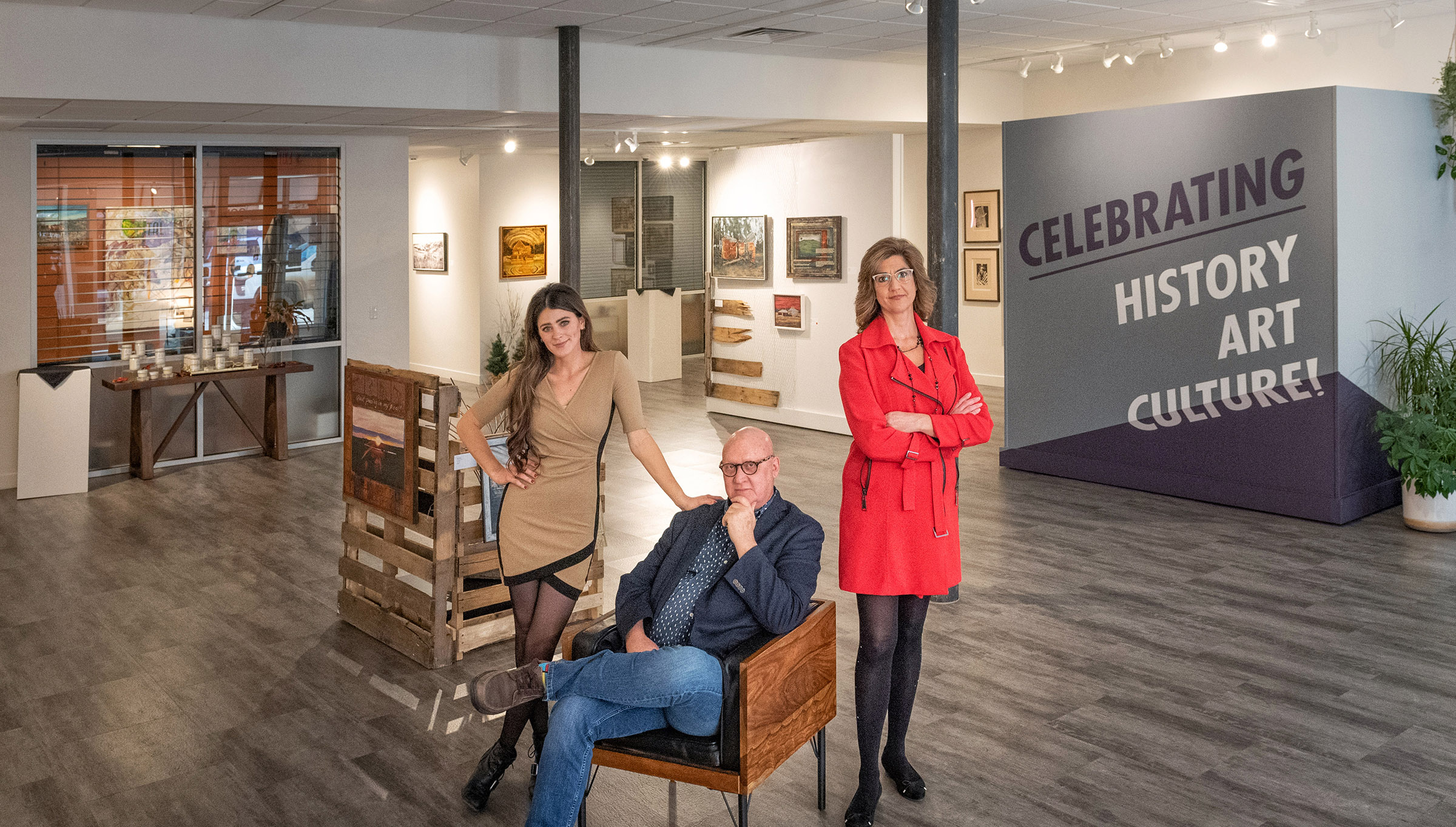
Dakota Digital Review: Do you sell much art through the website?
Borlaug: We don’t offer direct online sales. People can see the artist’s work on the website and then pick up the phone, email or text to purchase a piece. Two years ago, I got a phone call at 11:15 at night when I was lying in bed. It was a North Dakota farmer who had just come in from the field. He wanted to buy a Walter Piehl painting after hearing that we had some works available. He asked if I had access to the online portfolio via my cell phone. I said I did and was able to send him images. He chose the one titled “Ragtime Redux: Sweetheart of the Rodeo.” He completed the transaction right then, even though he had never seen the painting in person. But he had seen other works by Piehl in the gallery and wanted to snatch one before someone else did.
Dakota Digital Review: Do you use social media?
Borlaug: Yes, we are quite active on Facebook, and we’ve sold more art through our page than our website. Recently, someone visited our Facebook page and saw a bison painting, titled “Where the Grass Whispers,” by Kaye Burian. The client called and needed to see it in person first. I’ve sold many paintings sitting at the bar at Pirogue Grille and getting a call or text and sending people images. About half of sales originate with a client visiting our website or Facebook page. Then the buyer usually visits the gallery to see the piece in person.
The digital dimensions of an art gallery obviously work, but virtual reality can’t ever replace the real experience.
I think we’ve found a good use for digital in the gallery with plans to install a monitor to show all the art in storage. That way people can access our inventory, and then we can show pieces of interest.
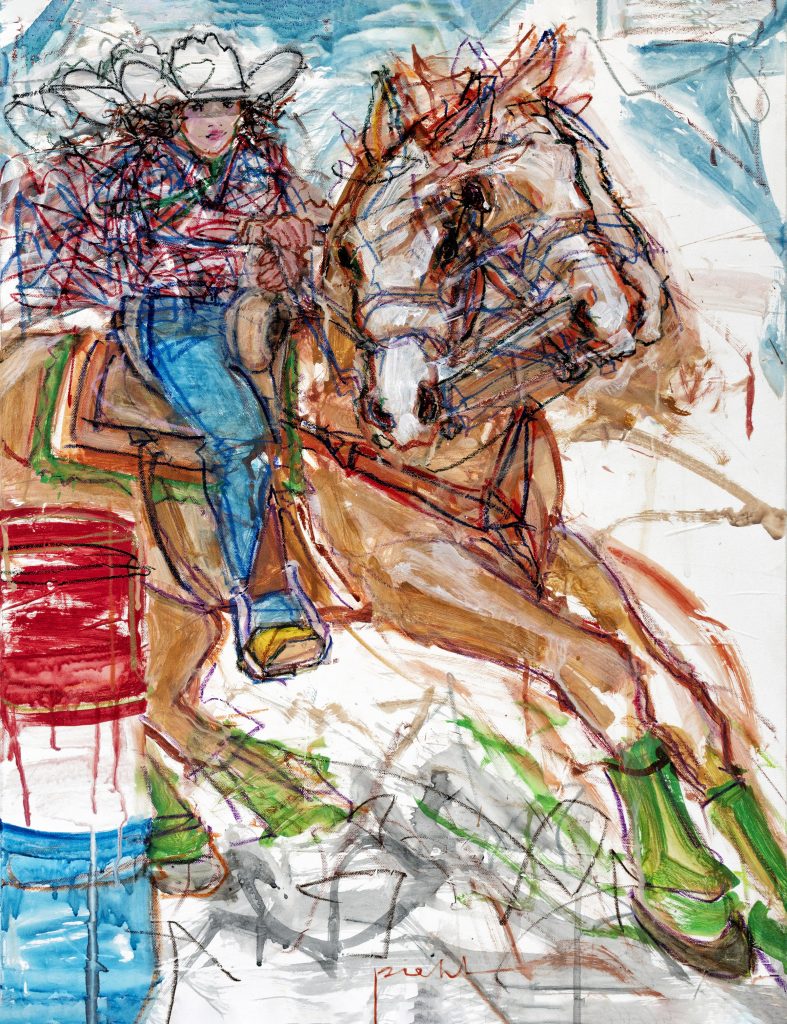
The Other Everywhere
Dakota Digital Review: How has the COVID-19 pandemic affected the gallery?
Borlaug: We were closed for several months in the spring, which halted sales. We survived and now are getting back on track. We scheduled the recent reception for Bob Matz on two evenings, instead of the usual one, to keep the crowd size down and allow for social distancing.
Dakota Digital Review: Have you detected any change with the artists?
Borlaug: Yes, I’ve noticed an increase in intensity in their work during the pandemic, although they don’t explicitly reference it. Ironically, isolation has forced them to do what they always wanted to do—that is, stay in their studios and focus on their art. So, there is already an outpouring of art like we never saw coming. I don’t think it will necessarily be dark. You will see despair, but also exuberance and all the other human elements.
Dakota Digital Review: Any artist in particular?
Borlaug: Walter Piehl for one. He’s been painting for 50 years and taught at Minot State University for more than four decades. Now he’s retired and having the time of his life thanks to The Capital Gallery. We’ve sold 50 pieces of his art over the last four years, making him our top selling artist and the most successful artist in the state. A customer came into the gallery last month and bought three Walter Piehls for more than $20,000. (Since this interview, the customer returned to buy a fourth work). We sold two of Bob Matz’s paintings today. Next time Bob walks in, he’ll see two new red dots on the pieces on the wall. The ultimate affirmation is the sale, and it invigorates the artist.
Now Walter is living in isolation, because of COVID-19, and doing nothing but working on his art. He had started a new series about barrel racing. Most of his paintings are parts of series involving the rodeo. His father was a rodeo producer, and Walter competed in rodeo and worked on the side as a rodeo announcer for 30 years.
Walter works in his studio much like artists centuries ago. Yet because of digitization, he can archive his work and send images and communicate by text. Technology tempers seclusion and helps make it more productive.

